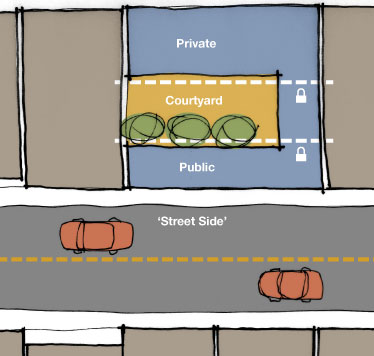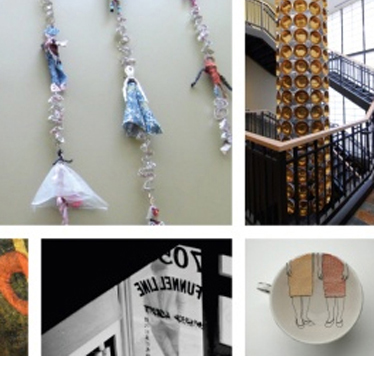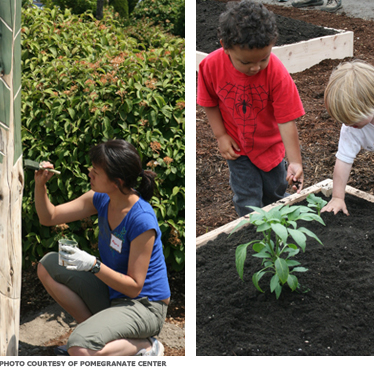
[Re]connect
Community support and [re]connection with others to break the isolation of abuse
Allow varied/multiple levels of access for public areas.
A community meeting room open to the public may be used by residents to gather with family and supportive friends, host community groups for meetings, and/or provide a location for classes or workshops. Similarly, an outdoor gathering space that can be used for public events, without compromising resident safety, can invite community members to get involved in fulfilling the shelter’s mission.
A community meeting room open to the public may be used by residents to gather with family and supportive friends, host community groups for meetings, and/or provide a location for classes or workshops. Similarly, an outdoor gathering space that can be used for public events, without compromising resident safety, can invite community members to get involved in fulfilling the shelter’s mission.



Protecting individual confidentiality does not always require a secret location. While many domestic violence programs have traditionally relied on “secret” locations as a strategy to keep the shelter safe, it is more difficult to keep a location secret now than it was 30 years ago. GPS-enabled devices and the internet challenge programs’ abilities to ensure secrecy. In response, some programs focus on security and individual client confidentiality while acknowledging that physical locations may be known. These programs have found that letting go of the “secret location” has opened new ways for their communities to support both the program and individual survivors.
Art can be a bridge to the community and an expression of culture.
Art can communicate welcome and affirm the value of the services provided and the population being served.
Art can communicate welcome and affirm the value of the services provided and the population being served.


At the Asian Counseling and Referral Services the artwork throughout the building reflects the community’s traditions; the artist worked from the idea of everyone sitting together to have a banquet; and engaged community members in creating works of art using rice bowls.
Partner with local organization to create and maintain outdoor spaces.
Inviting local organizations and volunteers to sponsor and maintain green spaces, gardens and playgrounds, etc. on shelter property is a cost-effective strategy for achieving high quality outdoor spaces. It also helps to get the community invested in the well-being of the shelter residents.

 Pomegranate Center is a non-profit organization in Washington State that engages volunteers in designing and building unique gathering places and public art that reflects the culture and character of the people they serve.
Pomegranate Center is a non-profit organization in Washington State that engages volunteers in designing and building unique gathering places and public art that reflects the culture and character of the people they serve.
To learn more, see the Pomegranate Center website.
Inviting local organizations and volunteers to sponsor and maintain green spaces, gardens and playgrounds, etc. on shelter property is a cost-effective strategy for achieving high quality outdoor spaces. It also helps to get the community invested in the well-being of the shelter residents.


 Pomegranate Center is a non-profit organization in Washington State that engages volunteers in designing and building unique gathering places and public art that reflects the culture and character of the people they serve.
Pomegranate Center is a non-profit organization in Washington State that engages volunteers in designing and building unique gathering places and public art that reflects the culture and character of the people they serve.To learn more, see the Pomegranate Center website.